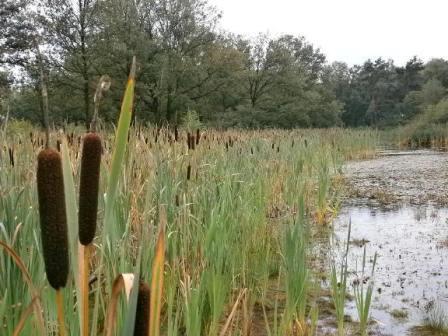The pre-treatment is done in a cascade system.
In a first sediment tank the heavy components of the waste water sink to the bottom.
Aerobic bacteria in wastewater degrade and brake waste. The addition of air accelerates this process.
 As in nature wastewater can be purified through a reed bed. The root system of cane has a very high purification capacity. Let wastewater first undergo (pre)sedimentation in order to remove coarse waste.
As in nature wastewater can be purified through a reed bed. The root system of cane has a very high purification capacity. Let wastewater first undergo (pre)sedimentation in order to remove coarse waste.
Finer material can be scavenged on a sand filter. You have to drain and clean it regularly (4x/jr). By organic matter and algae growth he will become green. Scrape at least 2 cm of sand and wash and rinse it for reuse. Or replace it with pure sand, and let the washed sand dry in the sun and clean it for later reuse (in rotation).
The roots of the reed get oxygen from the air. The bacteria on the roots can thus degrade organic compounds and ammonia into nitrate nitrification). The bacteria in the bottom of the reed work as an active silt. The purified water can be discharged through an inspection pit and drained to open water.
For purification through reed you need 3 to 5m ² per person. The reed needs some time to grow into a full and good working treatment system. The life of a reed field is limited. After 25 to 30 years the roots become saturated with mineralized sludge by the bacteria growth. You then should cleanse and refresh it.
It is not true that mosquitoes only live and survive in pure water. In polluted water they flourish even better! (because there are more nutrients available.)
With all the trouble to make water drinkable it is no wonder that our ancestors had a tradition to rely more on beer and wine.
